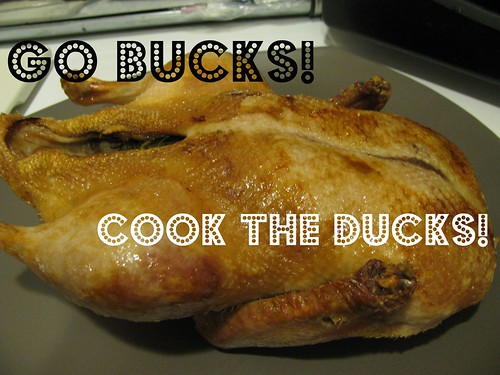 The Rose Bowl is days away. The Ohio State Buckeyes are playing the Oregon Ducks. Alex and I are both alumni and football fans. We are bringing a duck confit dish to a Rose Bowl party to poke fun at the opposing team's mascot.
The Rose Bowl is days away. The Ohio State Buckeyes are playing the Oregon Ducks. Alex and I are both alumni and football fans. We are bringing a duck confit dish to a Rose Bowl party to poke fun at the opposing team's mascot.
One of the most common complaints about duck (or goose for that matter) is that the meat is greasy or dry and unpalatable after roasting. Usually this is a result of not cooking it long enough to render away sufficient fat, or cooking it far too long and drying out the meat.
The method we use for waterfowl including duck and goose is based on Julia Child's technique in The Way to Cook
To begin, buy a fresh duck or goose from a reputable source. Our favorite Columbus sources are North Market Poultry and Game and Weiland's Market. Brine the bird in the refrigerator for up to twelve hours.
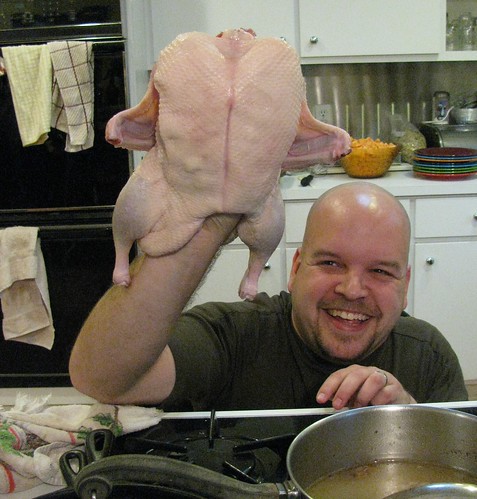
Trim the cavity of the bird of excess fat and trim the wing tips. Remove any giblets from the cavity and reserve these with the wing tips for making stock/gravy. You may or may not want to play with the bird at this time, giving a puppet show with Rose Bowl references.
 Aggressively salt the cavity of the bird and place it breast up in a metal roasting pan on a rack so that it is at least an inch off the bottom. Fill the pan to just below the bird with liquid. Any mix of water, wine, apple cider or orange juice works well, keeping in mind that flavor will be imparted to the bird. A few aromatic vegetables like celery and onion are welcome additions to the liquid.
Aggressively salt the cavity of the bird and place it breast up in a metal roasting pan on a rack so that it is at least an inch off the bottom. Fill the pan to just below the bird with liquid. Any mix of water, wine, apple cider or orange juice works well, keeping in mind that flavor will be imparted to the bird. A few aromatic vegetables like celery and onion are welcome additions to the liquid.
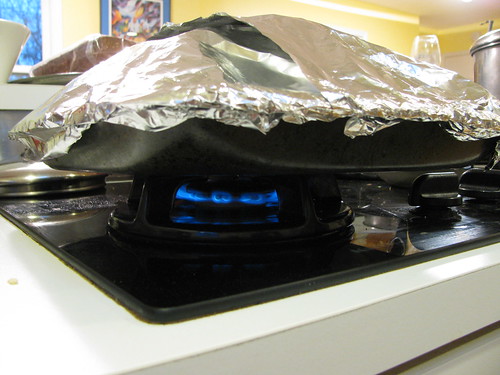
Cover the pan tightly (aluminum foil is fine) and place on the stove top over medium heat to begin steaming. Keep the liquid at a simmer, and add more as it boils away. The steaming time will vary by the size of the bird. A small duck (5 pounds) will take only half an hour while a large goose (12 pounds) will take about an hour. When the steaming is done, remove the bird to a tray and drain the liquid from the roasting pan.
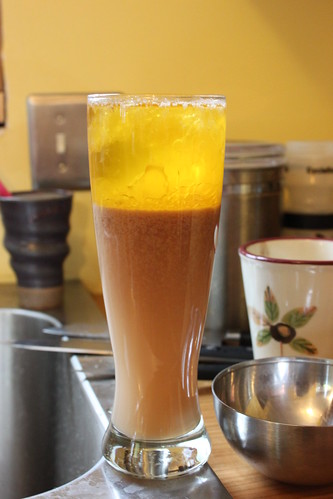
For a large goose you may collect as much as 3 cups of fat from the steaming process. Reserve the fat for future cooking use. It is easily poured into ball jars, cooked, and then refrigerated.
At this point, stuff the bird if that is your plan. A liver and fruit stuffing suits the flavor of duck and goose well, but your tastes may vary. If you do not want to stuff it, place an onion and some aromatic herbs in the cavity to add flavor.
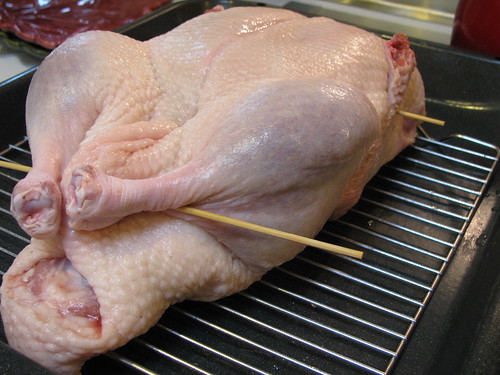
After stuffing, truss the legs together and place it breast side down in the roasting pan. Put it in the oven at 350 degrees. For a smaller bird, you will want to flip it over to finish roasting after one hour. For a larger bird, flip it over after one and a half hours. Finish roasting breast side up for 30 minutes to brown the skin. The meat should feel tender but slightly springy when pressed.
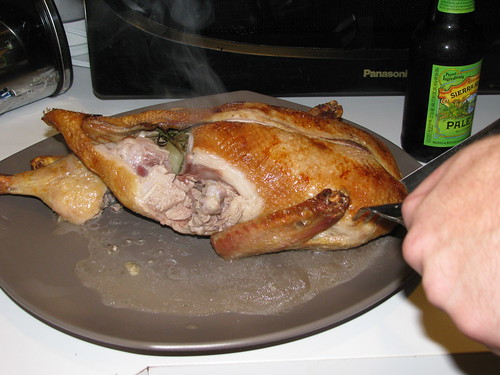
Remove from the oven and allow the bird to rest for 15 minutes while juices redistribute. Carve the bird up like you would a chicken and it is ready to eat. As you carve it, you will notice that there is still some fat in the bird. Because a vast majority of the fat was steamed away, the meat will be moist and taste delicious without being greasy. Also, you might notice that around the legs the juices will still be slightly red. This is perfectly fine. If you buy your poultry from someone you know or trust, there should be no worries about food-borne diseases.
GO BUCKS! COOK THOSE DUCKS!
Stay tuned for the Confit Conard (duck confit) technique post Thursday.
